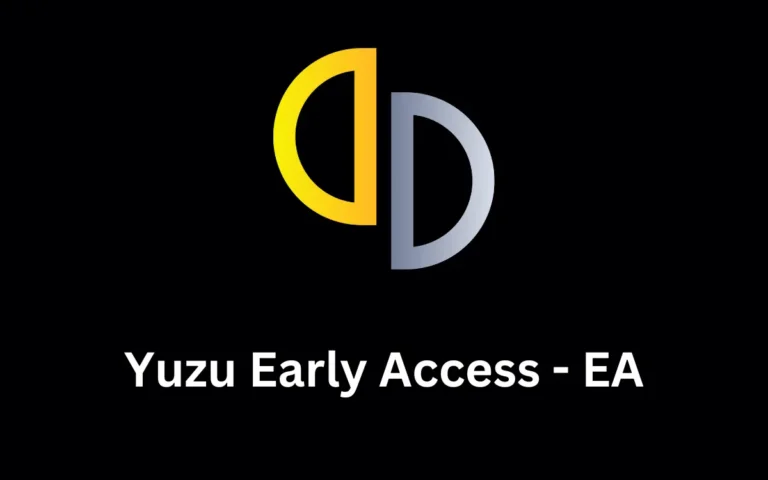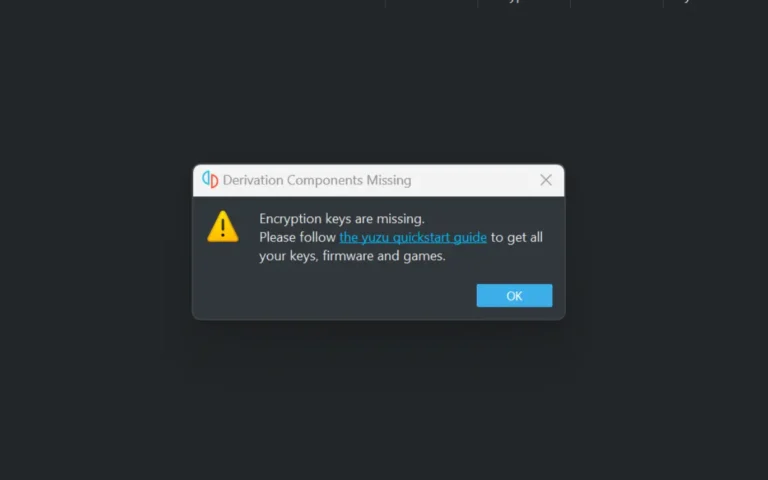A Guide to Manual Recovery of Outlook Data Encrypted by the VVEW Virus
Saving emails, contacts, meetings, and reminders in a .PST file format on your computer system without recovery plans in place is risky. Your computer may be exposed to virus attacks, especially the VVEW virus, which rids you of your access to MS Outlook and causes you to lose all the important infected .PST files and data. The easiest and fastest way to access and recover your infected .PST files is by using the Recovery Toolbox for Outlook.
VVEW is an advanced and awfully destructive ransomware virus that infects the computer system as it deletes and encrypts MS Outlook .PST/.OST files by adding its extension (.VVEW) – through mail, and web pages. The virus does not usually encrypt the whole file as the MS .PST/.OST files of are usually large. Hence, it affects the beginning and end of each file with a blend of several encryptions, and that is why data loss is inevitable.

Fortunately, with the Recovery Toolbox for Outlook you can fix your .PST files, irrespective of the version, (ANSI Outlook 97 -2003, Unicode 2007 and above), repair password protected files, and recover 99% of lost files. This software can be used in two ways, either online or offline. Both methods analyze your file and help you recover and access a large amount of your contacts, attachments, and emails.
Data recovery issues are a common problem everyone is facing. Are you also having issues with recovering your files from Microsoft Outlook? Then, this article is for you. We will addresses the process of recovering your infected files on Microsoft Outlook, either online or offline. So without, further ado, let’s dive in.
How Do I Recover My Infected .PST Files With Recovery Tool for Outlook Offline?
Here is a step-by-step guide on how you can recover your .PST files offline with Recovery Toolbox for Outlook.
Step 1: Locate the Affected File.
The first step is for you to identify the file you want to recover. If you are looking to recover lost data and fix Microsoft Outlook, you should check out these locations, depending on your Microsoft Outlook version:
- For Outlook 365: C:\Users\Username\AppData\Local\Microsoft\Outlook\
- For Outlook 2019: C:\Documents and Settings\user\Local Settings\Application Data\Microsoft\Outlook
- For Outlook 2016: C:\Documents and Settings\user\Local Settings\Application Data\Microsoft\Outlook
- For Outlook 2013: C:\Documents and Settings\user\Local Settings\Application Data\Microsoft\Outlook
- For Outlook 2010: C:\Documents and Settings\user\Local Settings\Application Data\Microsoft\Outlook
- For Outlook 2007: C:\Documents and Settings\user\Local Settings\Application Data\Microsoft\Outlook
- For Outlook 2003: C:\Users\username\Documents\Outlook Files\
- For Outlook XP: C:\Documents and Settings\Username\Local Settings\Application Data\Microsoft\Outlook
- For Outlook 2000: C:\Documents and Settings\Username\Local Settings\Application Data\Microsoft\Outlook
Step 2: Download the Recovery Toolbox for Outlook and Run the Program.
After locating your affected files, the next thing step is to go online to download the Recovery Tool, then open it on your computer to begin the repair.
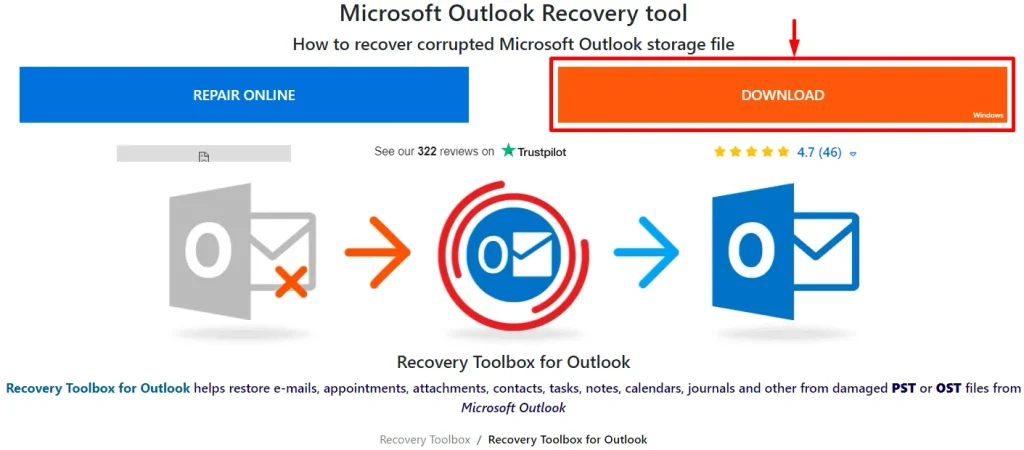
Step 3: Select the Corrupt File and Click Next.
Once the Recovery Toolbox for Outlook is working on your computer system, click on the corrupt file you have located, and click next.
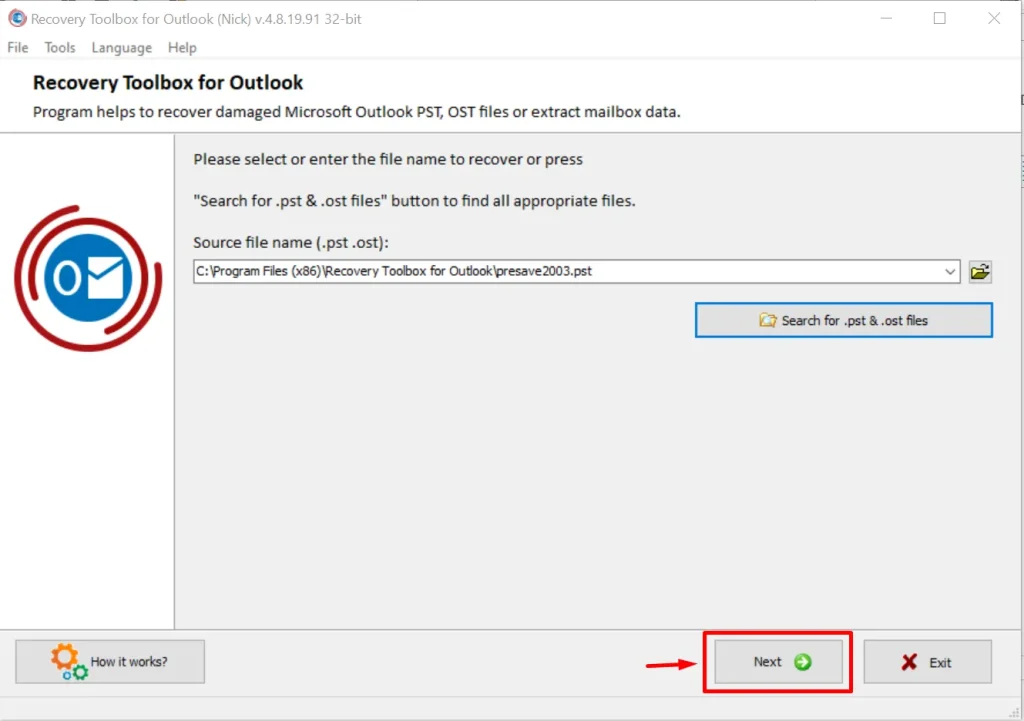
Step 4: Select Recovery Mode and Click Next.
The offline recovery tool has two types of work modes. Click on Recovery mode and then click on Next to start your file recovery.
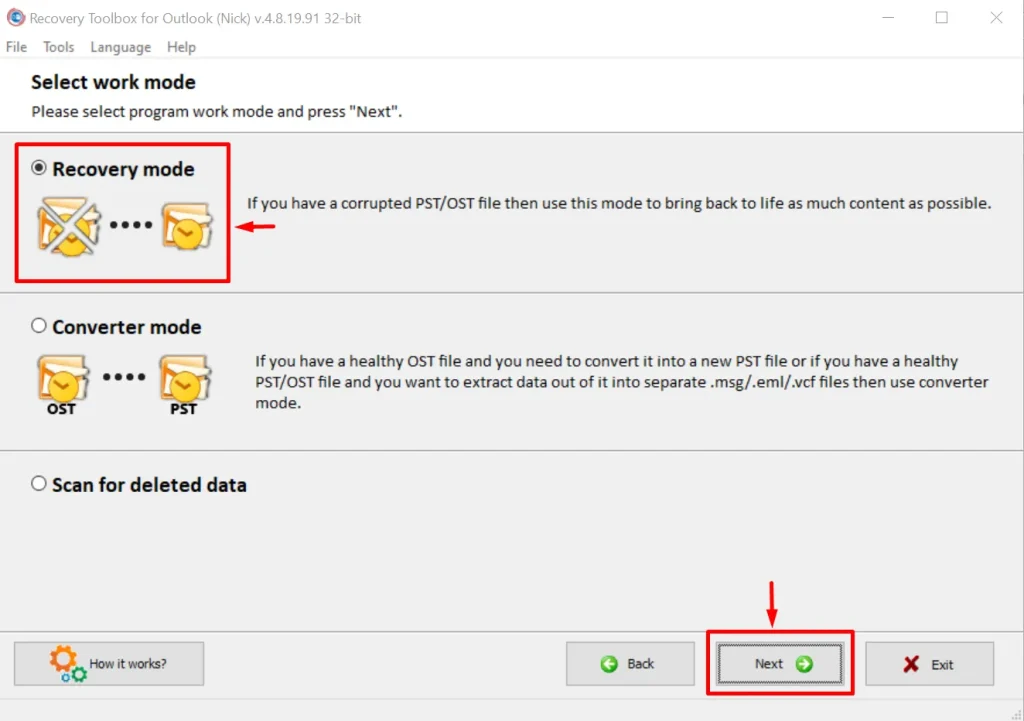
Step 5: Confirm ‘Yes’ to Begin Your File Recovery Process.
A question will pop up on your screen, asking whether or not you wish to begin the recovery process – click on Yes.

Step 6: Inspect the Data Preview and Click Next to Save The Recovered File to Another Location.
Examine the preview of the recovered data to verify if that is the data you want to be recovered. Once you are certain that it’s the correct file, click on the Next button.
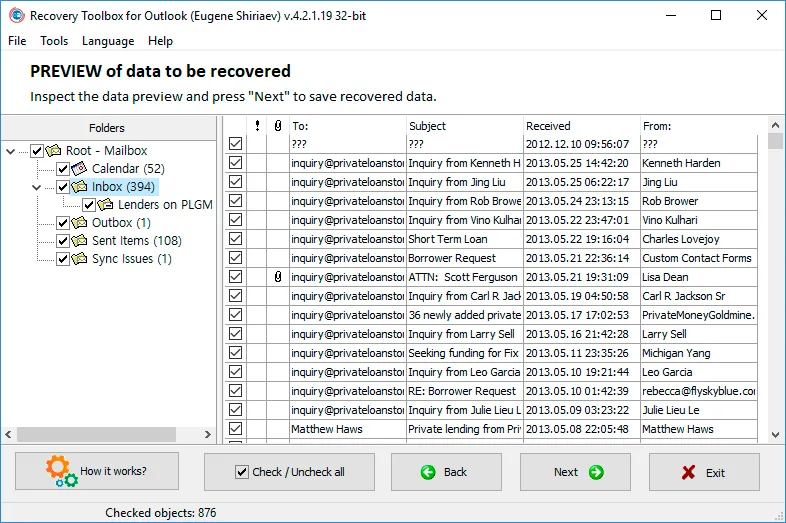
Step 7: Enter the Location Part to Save Recovered .PST File and Click Next.
Select your target folder to save the recovered data, then click Next.
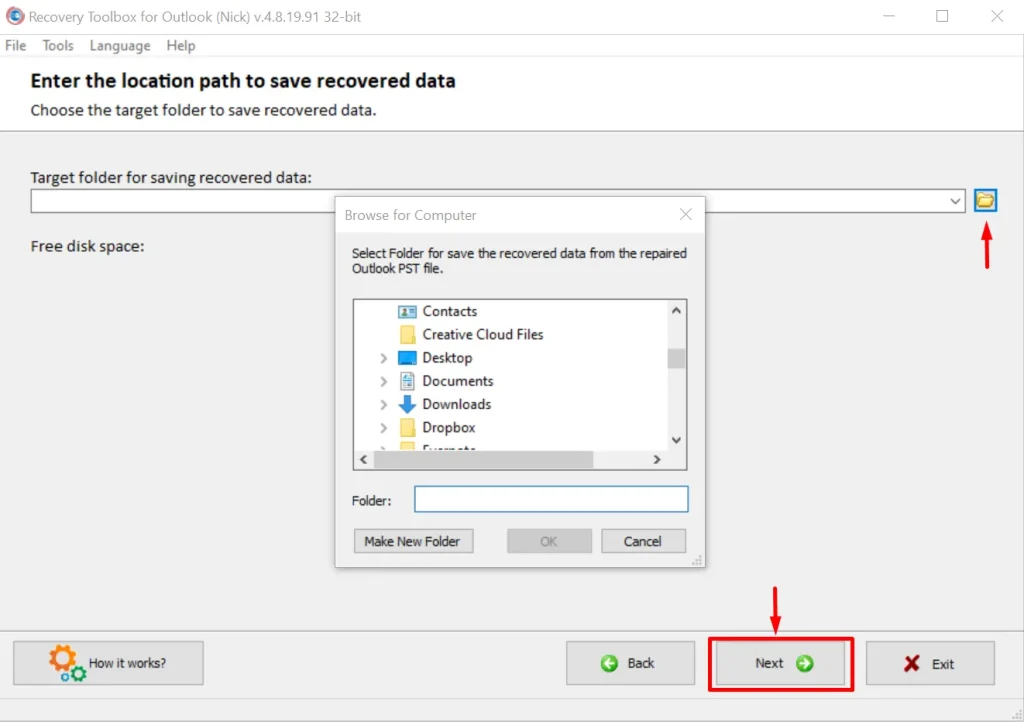
Step 8: Save Recovered Data as the New .PST File.
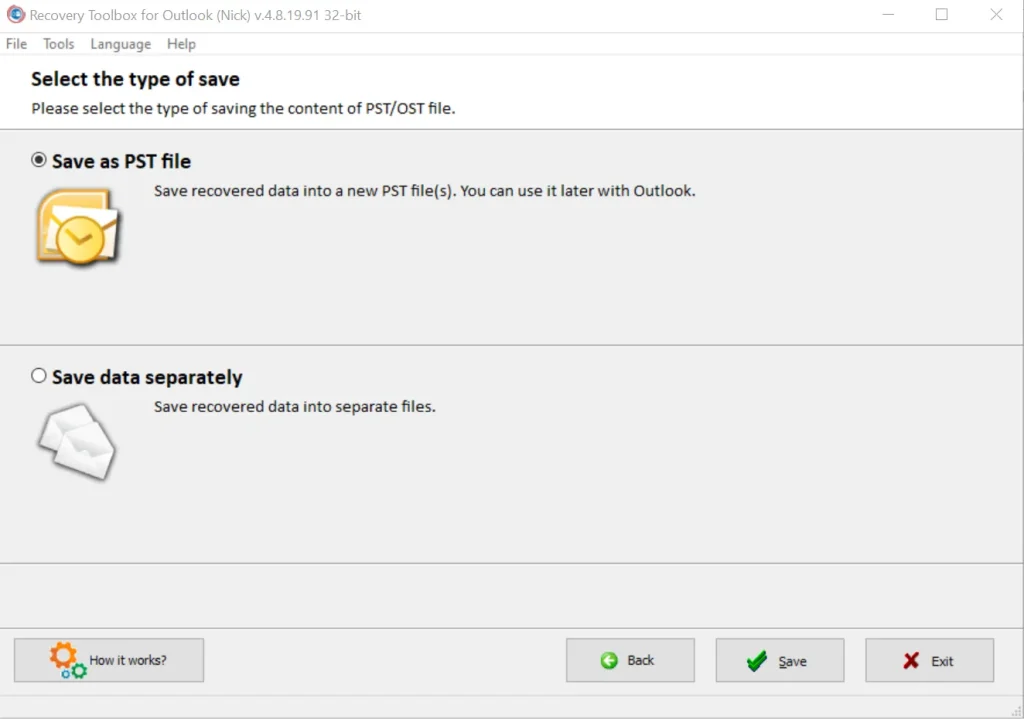
Step 9: Check the Successful Recovery Results, then Click Finish to Exit the Recovery Toolbox for Outlook.
Check your results and then exit the recovery tool.
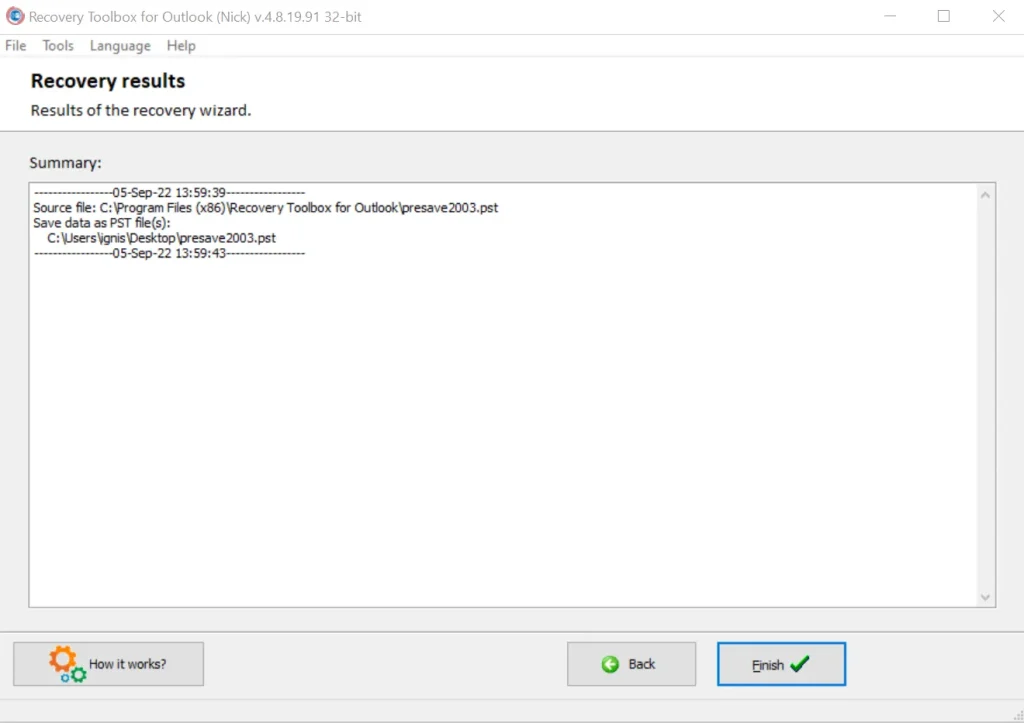
Step 10: Replace the Damaged File with the Recovered One, or add the Recovered File to the List of Data Files in Outlook.
To replace the damaged file with the recovered file or to add it to your outlook, for Outlook versions 2021, 2019 and 2013, here are the steps you should take:
STEP 1: Select the Info option from the File menu.
STEP 2: Next, select Account Settings from the menu.
STEP 3: Select Account Settings from the pop-up menu to complete the process.
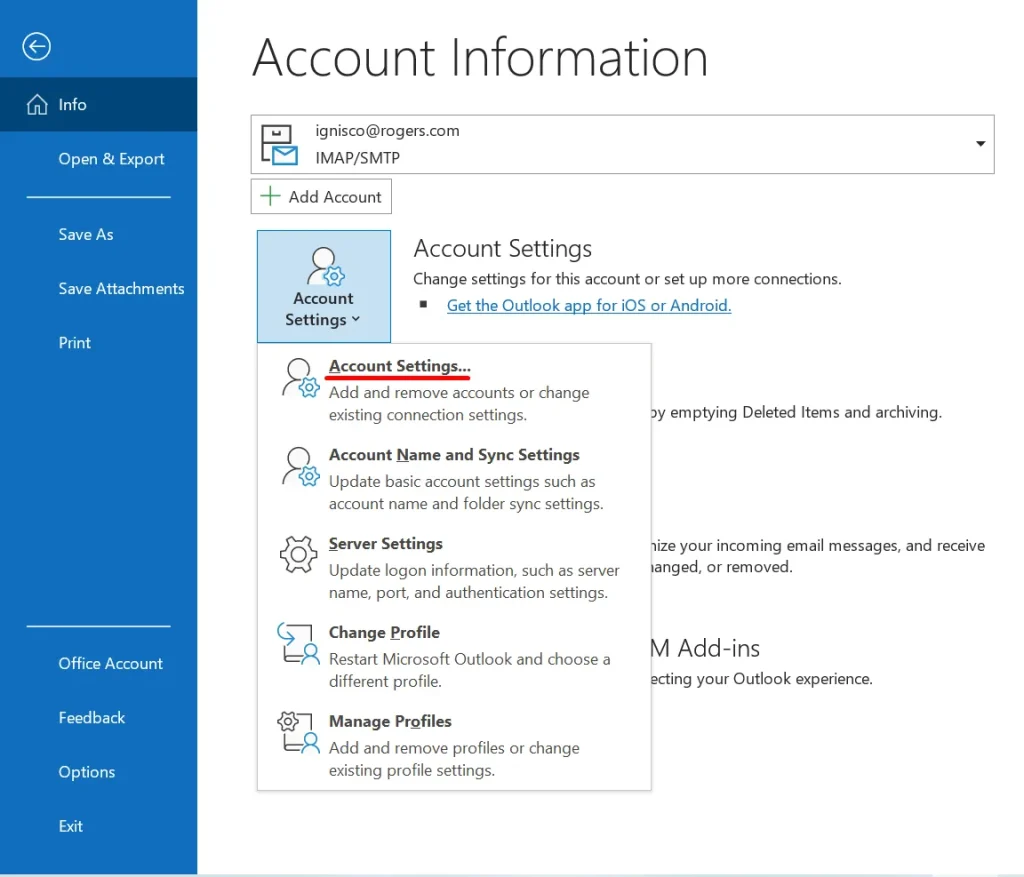
Then, select the Data Files tab and click Remove.

Next, Click Open File Location and select the recovered file. Click on Set as Default.

And Voila! You are finished, and the issue of your damaged .PST file is resolved.
How Do I Recover My .PST File with Recovery Toolbox for Outlook Online?
Here is a step-by-step guide on how you can recover your infected .PST/ .OST files online, through the Online Outlook Recovery tool. This method is quite faster than previous one, and you can recover all types of files for the available Outlook versions.
STEP 1: Change the file extension from VVEW to .PST – the service needs to know which recovery algorithm to use.
STEP 2: Click the Select File button, then choose an Outlook data file with the .PST extension.
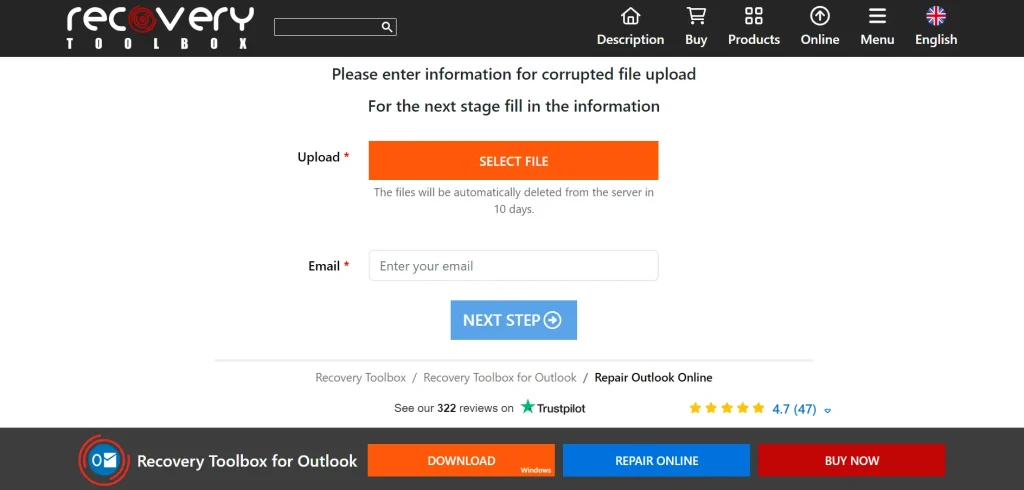
STEP 3: Enter a valid E-mail address and click on the Next Step button.
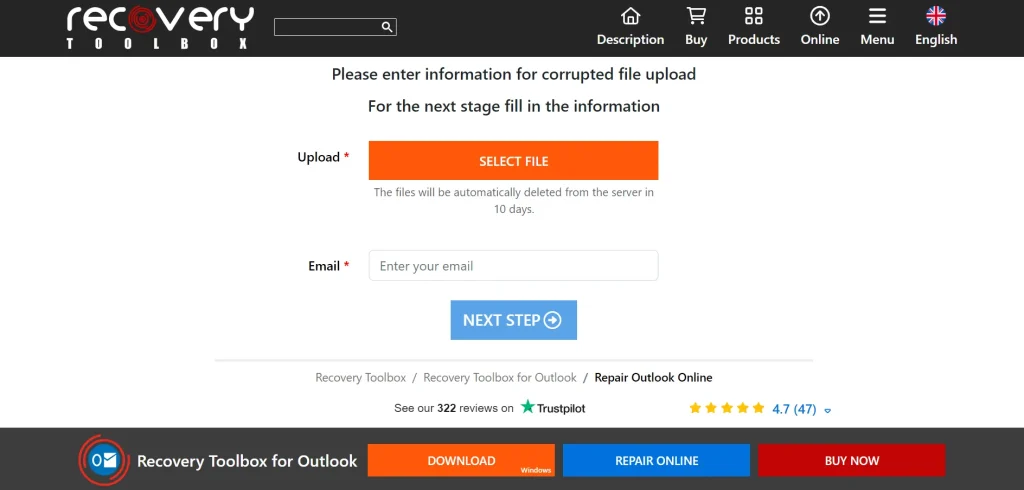
STEP 4: Wait for the recovery of the corrupted .PST/.OST file.
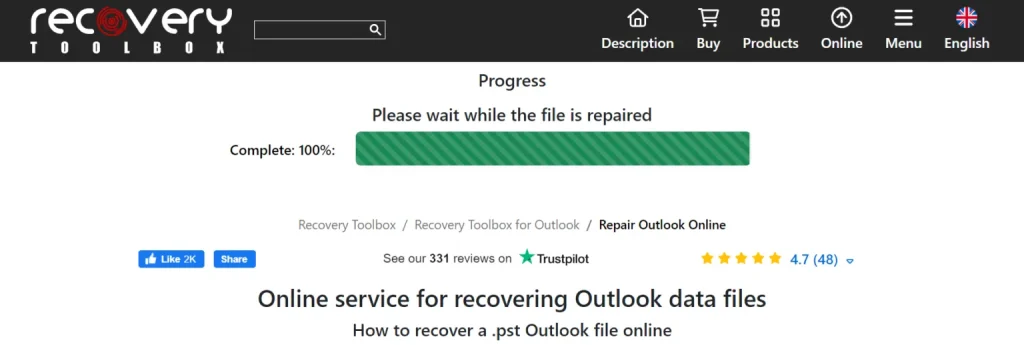
STEP 5: Download the Microsoft Outlook .PST file that was recovered by clicking on the NEXT STEP.
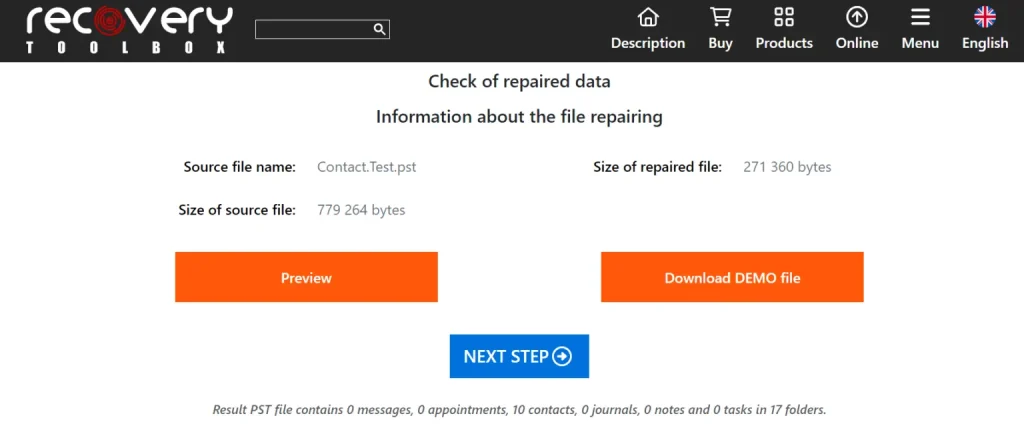
STEP 6: Preview the recovered .PST file online.
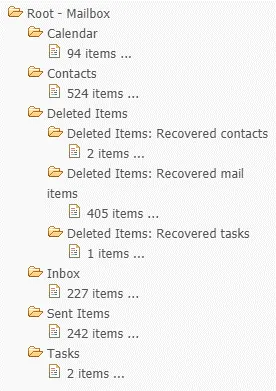
The recovered data from the infected Microsoft Outlook file will be saved as a new Microsoft Outlook 2016 file with the .PST extension, enabling you to recover .PST Microsoft Outlook Personal Folder files on any device with a browser.
Advantages of The Recovery Toolbox for Outlook
1. Fixes .PST Files of Every Version of Microsoft Outlook: ANSI (Outlook 97-2003), Unicode (2007 and above)
The Recovery Toolbox for Outlook works on all versions of Microsoft Outlook, and can recover at least 99% of your virus-infected data.
2. Fixes .PST Files of Every Size
Recovery Toolbox for Outlook can fix every size of .PST/.OST files. It has successfully fixed files with 180Gb+. Fixes encrypted .PST Files with the recovery tool, so you can recover any encrypted and coded .PST files.
3. Recovers All Types of Files Irrespective Of The Damage
Recovery Toolbox for Outlook is highly advanced and can recover all types of files, the frequency of damage notwithstanding – whether viral attacks, software bugs, network errors, hardware problems, RAID, or HDD failure, the Recovery Toolbox for Outlook can recover the files lost to these issues.
4. Fixes Errors On Any Device
The Online Outlook Recovery Tool helps you fix all kinds of errors and recover your files on any device, without difficulty.
5. Restores .OST Files of Any Version
The Recovery Toolbox for Outlook recovers all objects from damaged Exchange Servers (.OST) For example, you can gain immediate access to all the work files you sent to your colleagues using the Microsoft Outlook email client in a few simple steps.
Wrapping Up
The Recovery Toolbox for Outlook is a necessary tool for individual and corporate, use as there will always be cases of viral attacks, and it is essential to be prepared to combat them. Recovery Toolbox is a software developer, ISV vendor, and distributor company based in Varna, Bulgaria.
The company specializes in developing and introducing easy-to-use practical tools like Recovery Toolbox for Outlook for .OST/.PST recovery and repair and are highly acclaimed by clients and industry professionals.
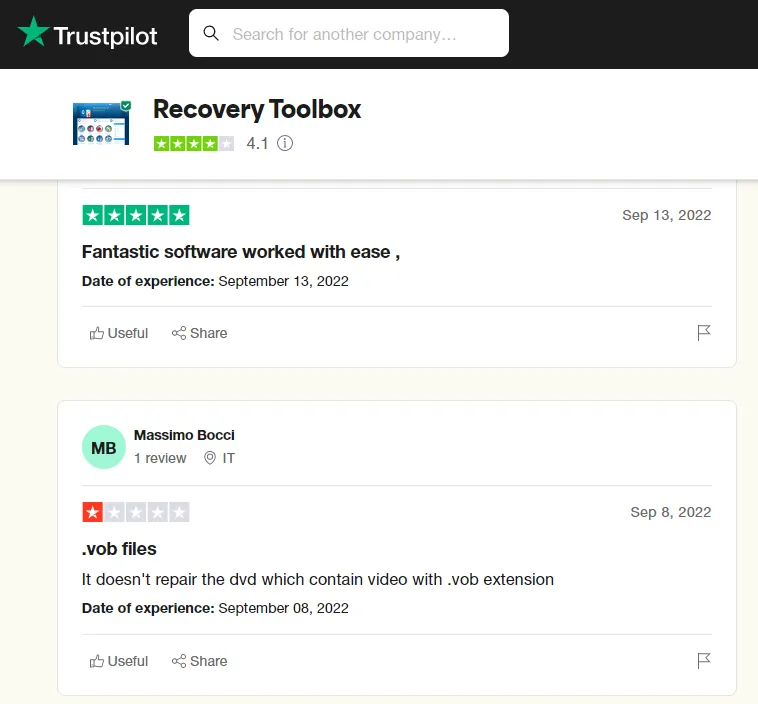
Don’t let viruses and other bugs slow down your work, at home or in the office. Recover your sent and lost files with Recovery Toolbox for Outlook today.
FURTHER READING
- How to Enhance Team Collaboration in Remote Work Settings
- Fixing Graphics & Display Issues on Your Mac


